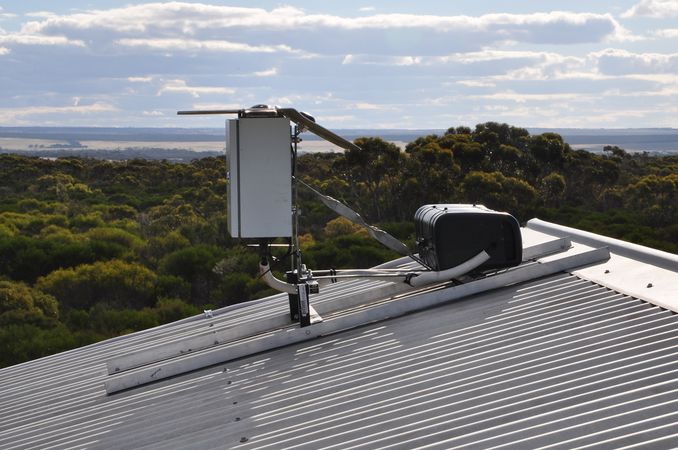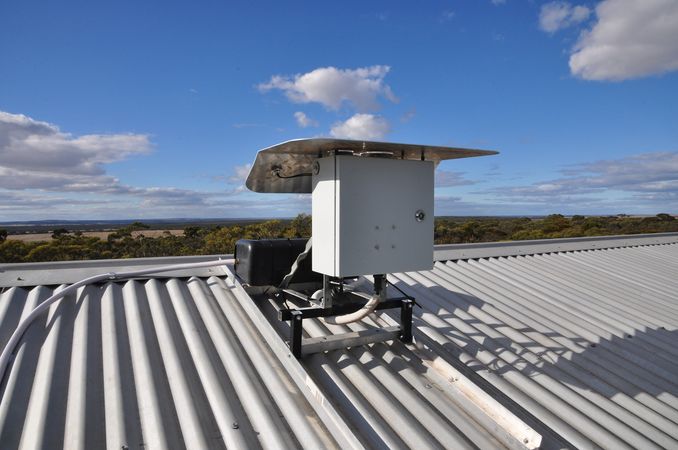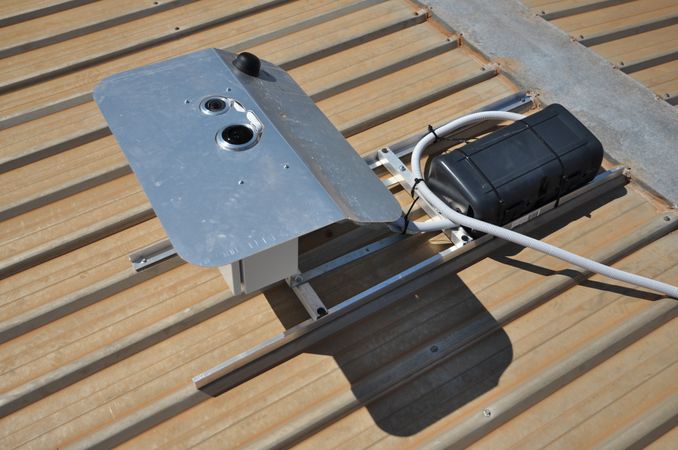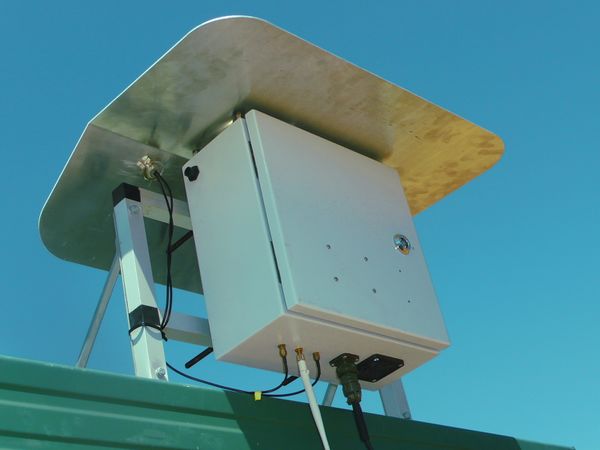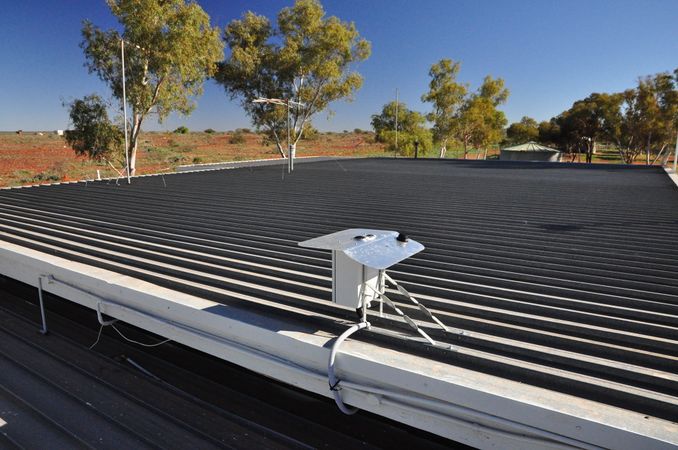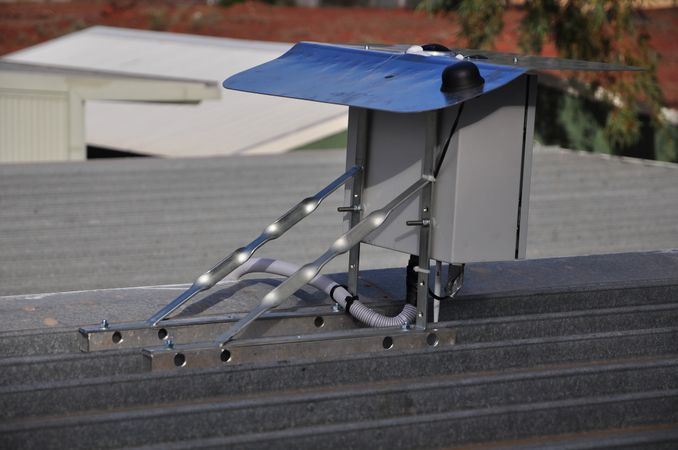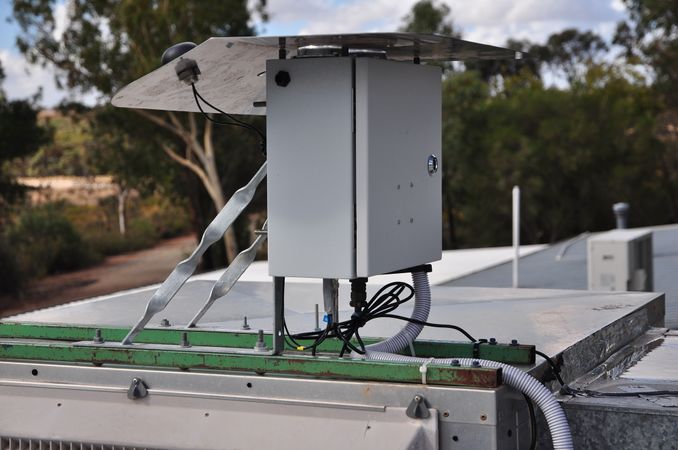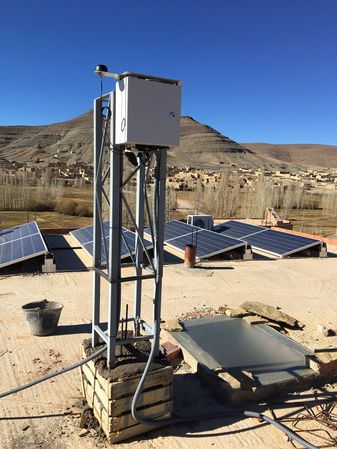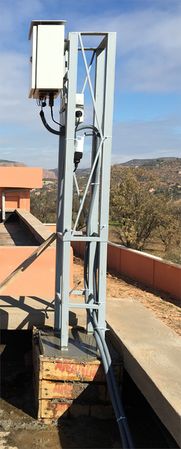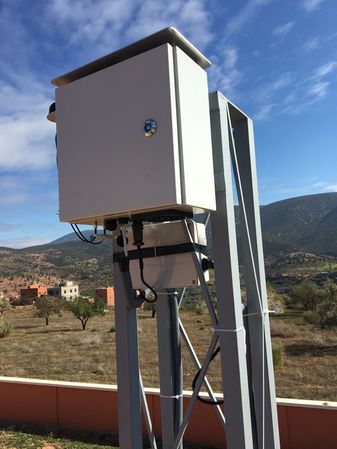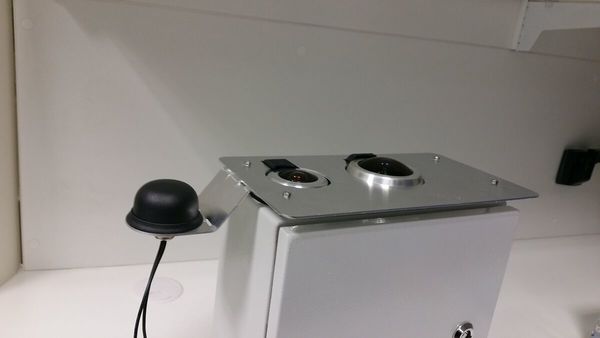Difference between revisions of "Rooftop Fireball Camera Installation"
Robert Howie (talk | contribs) m (1 revision imported) |
Martin Cupak (talk | contribs) |
||
| (6 intermediate revisions by 2 users not shown) | |||
| Line 1: | Line 1: | ||
| + | |||
| + | == DFNSMALL and DFNEXT installations in Australia == | ||
DFN observatories need to be securely mounted as the images used for calibration can be captured a few hours or days (in the case of a full moon) apart from the actual fireball event. Standalone ground based installation using a stand provides the best stability, but is not always practical due to site constraints or an obscured horizon. Roof mounting can be a convenient alternative in some situations. The observatories must be pointed as close to the vertical as possible, so the incline of the roof will need to be taken into account. The observatories should be bolted into the rafters if possible, not just the roof surface, to minimise wind movements, and (possibly) movement due to thermal expansion of the roof surface. | DFN observatories need to be securely mounted as the images used for calibration can be captured a few hours or days (in the case of a full moon) apart from the actual fireball event. Standalone ground based installation using a stand provides the best stability, but is not always practical due to site constraints or an obscured horizon. Roof mounting can be a convenient alternative in some situations. The observatories must be pointed as close to the vertical as possible, so the incline of the roof will need to be taken into account. The observatories should be bolted into the rafters if possible, not just the roof surface, to minimise wind movements, and (possibly) movement due to thermal expansion of the roof surface. | ||
| Line 4: | Line 6: | ||
Roof mounts can be built entirely from parts found from a hardware store. The DFN has successfully used shelving brackets, aluminium angle or square hollow section assembled with bolts and aluminium channel with modular connectors: | Roof mounts can be built entirely from parts found from a hardware store. The DFN has successfully used shelving brackets, aluminium angle or square hollow section assembled with bolts and aluminium channel with modular connectors: | ||
| − | <gallery mode="packed" heights=" | + | <gallery mode="packed" heights="300"> |
File:DSC 1496 Hyden camera 1200.JPG| | File:DSC 1496 Hyden camera 1200.JPG| | ||
File:DSC 1485 Hyden camera 1200.JPG| | File:DSC 1485 Hyden camera 1200.JPG| | ||
| Line 13: | Line 15: | ||
File:Rooftop camera.jpg| | File:Rooftop camera.jpg| | ||
</gallery> | </gallery> | ||
| + | |||
| + | == DFNEXT installations in Morocco == | ||
| + | |||
| + | <gallery mode="packed" heights="300"> | ||
| + | File:IMG 5087 Agoudal DFNEXT 1600.jpg| | ||
| + | File:IMG 5373 Ozoud DFNEXT 1600.jpg| | ||
| + | File:IMG 5377 Ozoud DFNEXT 1600.jpg| | ||
| + | </gallery> | ||
| + | <center>Photos courtesy of Moroccan Observatory for Fireball Detections (MOFID)</center> | ||
= Mounting Pattern = | = Mounting Pattern = | ||
| Line 20: | Line 31: | ||
[[File:DFNEXT and DFNSMALL mounting pattern (PDF format).pdf]] | [[File:DFNEXT and DFNSMALL mounting pattern (PDF format).pdf]] | ||
| + | |||
| + | = Sunshield = | ||
| + | |||
| + | DXF drawing exports for laser cutting: | ||
| + | |||
| + | * Small DFNEXT/DFNSMALL 2mm aluminium sunshield for cold/moderate climate areas [[Media:20170330_Sunshield_2mm_Al.dxf|20170330_Sunshield_2mm_Al.dxf]] | ||
| + | ** Important: the GPS antenna mount point od the small sunshield needs to be bent / dropped a bit not to block the fielad of view of the all-sky fish eye lenses. | ||
| + | [[File:20171011 135614 Sunshield 1200.jpg|600x400px]]] | ||
| + | |||
| + | See these images: [[Media:Chiricahua Astronomy Complex Fireball Camera.jpg|Arizona DFNEXT system]], [[Media:20190725 160927.jpg|Granum camera system in Alberta, Canada]] | ||
| + | * Large DFNEXT/DFNSMALL 2mm aluminium sunshield for hot climate areas [[Media:20191218_large_dfnext_sunshield_2mm_aluminum.dxf|20191218_large_dfnext_sunshield_2mm_aluminum.dxf]] | ||
| + | ** Similar with the large sunshield - needs to be bent, see the images above. This new design was improved by adding slits along the bend line, which makes the bending a lot easier in the field. | ||
= Securing the Power Adapter = | = Securing the Power Adapter = | ||
Latest revision as of 04:13, 11 June 2021
Contents
DFNSMALL and DFNEXT installations in Australia
DFN observatories need to be securely mounted as the images used for calibration can be captured a few hours or days (in the case of a full moon) apart from the actual fireball event. Standalone ground based installation using a stand provides the best stability, but is not always practical due to site constraints or an obscured horizon. Roof mounting can be a convenient alternative in some situations. The observatories must be pointed as close to the vertical as possible, so the incline of the roof will need to be taken into account. The observatories should be bolted into the rafters if possible, not just the roof surface, to minimise wind movements, and (possibly) movement due to thermal expansion of the roof surface.
Roof mounts can be built entirely from parts found from a hardware store. The DFN has successfully used shelving brackets, aluminium angle or square hollow section assembled with bolts and aluminium channel with modular connectors:
DFNEXT installations in Morocco
Mounting Pattern
The observatory has four M8 mounting bolts in a 185x185 mm square pattern.
File:DFNEXT and DFNSMALL mounting pattern (PDF format).pdf
Sunshield
DXF drawing exports for laser cutting:
- Small DFNEXT/DFNSMALL 2mm aluminium sunshield for cold/moderate climate areas 20170330_Sunshield_2mm_Al.dxf
- Important: the GPS antenna mount point od the small sunshield needs to be bent / dropped a bit not to block the fielad of view of the all-sky fish eye lenses.
See these images: Arizona DFNEXT system, Granum camera system in Alberta, Canada
- Large DFNEXT/DFNSMALL 2mm aluminium sunshield for hot climate areas 20191218_large_dfnext_sunshield_2mm_aluminum.dxf
- Similar with the large sunshield - needs to be bent, see the images above. This new design was improved by adding slits along the bend line, which makes the bending a lot easier in the field.
Securing the Power Adapter
(to be completed) weatherproof box, conduit
Sheet Metal Roof Mount
depending on the results of some analysis of historical pointing stability data, we may design and upload CAD files for a bent sheet metal roof mount at some point in the future
